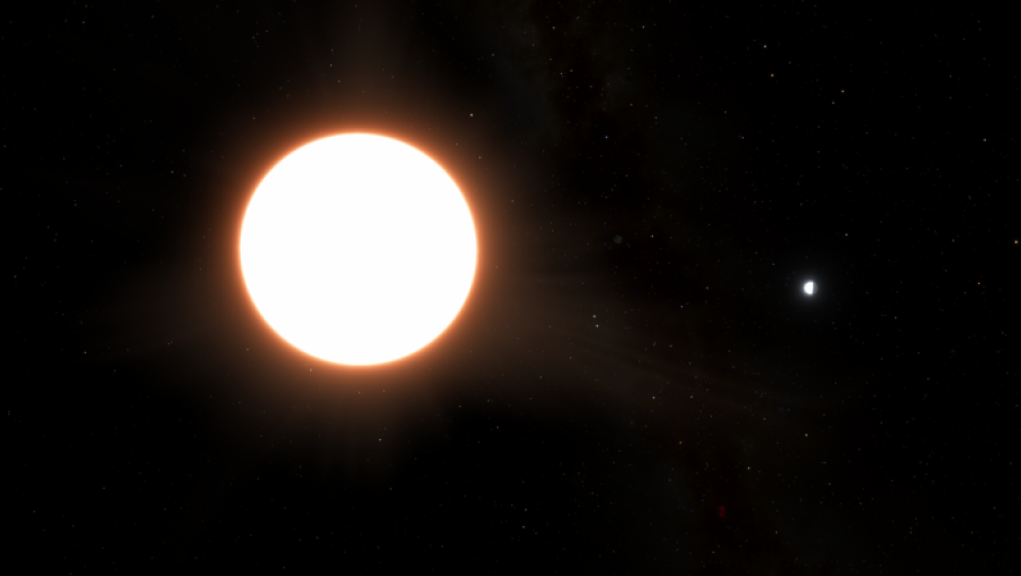It has been about three decades since the first confirmed exoplanet was discovered. In the following 30 years, using a variety of telescopes and instruments on the ground and in space, astronomers have cataloged more than 5,000 planets around other stars.
But the universe has even more surprises in store. Astronomers have confirmed that our Milky Way galaxy is teeming with billions of planets, each with its own unique characteristics. From large to small, hot to cold, there is a wide variety of planets out there, some of which could potentially support life.
As our understanding of exoplanets grows, so does our ability to study them in more detail. The Cheops satellite, launched just a few years ago, has already provided valuable insights into the nature of these distant worlds.
A planet that shines bright
In a recent publication in the journal Astronomy & Astrophysics, European scientists describe a fascinating exoplanet called LTT9779 b. What makes this planet particularly intriguing is its incredibly high albedo, or reflectivity. While Earth reflects about 30 percent of the Sun’s light, and Venus reflects 75 percent, LTT9779 b reflects a staggering 80 percent of the light it receives.
Located around a Sun-sized star about 260 light-years away from Earth, LTT9779 b is a hot planet that orbits its star every 19 hours. With a radius slightly larger than Neptune and a scorching surface temperature of about 2,000° Celsius, it defies our expectations of what a planet in such close proximity to its star should be like.
Previously, only large gas giants or much smaller worlds had been found in such close orbits. This has led astronomers to refer to this region as a “hot Neptune desert.” However, the discovery of LTT9779 b has added a new layer of mystery to this already intriguing area of study.
Advertisement
Unraveling the mystery
Unveiling the secrets
Missions like Cheops were designed to solve these kinds of mysteries. By focusing on a single world for an extended period of time, they can gather detailed information and uncover the secrets of these distant planets.
In the case of LTT9779 b, Cheops observed the planet as it passed behind its star on multiple occasions. By measuring the combined light from both the star and the planet, scientists were able to determine the intrinsic brightness of LTT9779 b.
Based on this data, researchers have developed a theory that the planet started out as a gas giant but has been losing mass over time. Its atmosphere is composed of silica material, similar to glass, and titanium. This unique composition allows for the formation of metallic clouds, resulting in the planet’s high reflectivity.
Further observations from telescopes like Hubble and James Webb could provide even more insights into this shiny new world and its atmosphere.
Astronomers have solved a puzzling enigma about the strikingly mirror-like planet Proxima Centauri b, located just four light years away from our sunshine. This is the planet closest to us to host a natural satellite.
A team of astronomers from the Center for exoplanets and Habitability at University of Warwick, working with their collaborators from the Instituto de Astrofísica de Canarias and other research facilities, have used sophisticated software to simulate how the exoplanet Proxima Centauri b came into existence.
The research shows that around 4.85 billion years ago, Proxima Centauri b originally formed close to its star a thousand times farther away than it is today. By a remarkable series of events, Proxima Centauri b ended up migrating close to Proxima Centauri approximately one million years after formation.
By employing an algorithm for predicting planetary migration, the group was able to model the path of Proxima Centauri b from its formation site to its very close encounter with the parent star.
The results of this study are important for understanding planetary formation. For instance, a planet like Proxima Centauri b that forms at one thousand times the current distance will quickly migrate onto the orbit from which is now observed, due to the tug of its parent star.
The team is now taking advantage of the new insights this research offers to reconsider the long-term evolution of Proxima Centauri b, and its potential habitability.
The results of this study are available for review in the paper “Origin and Evolution of Proxima Centauri b,” published in the Astrophysical Journal Letters.
By Dr. Mya White
Astronomy Researcher,
University of Warwick




















